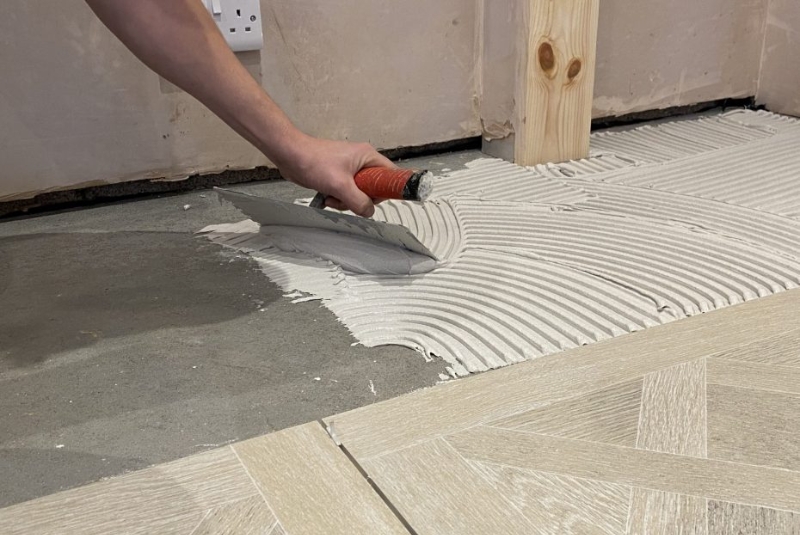Tile adhesive is a crucial component of any tiling project, holding together the intricate mosaic of your design.
Whether you’re adorning your floors, walls, or backsplashes, choosing the right adhesive is vital to ensure your tiles stay firmly in place. In this article,
I’ll delve into the world of tile adhesives, with a particular focus on two popular contenders: mastic and thin-set mortar.
Mastic: The Sticky Solution
Mastic, often referred to as ceramic tile adhesive, is a versatile adhesive option that serves well in various tile applications.
However, it’s important to recognize that while mastic has its strengths, it also has limitations, especially when it comes to moisture resistance.
Let’s break down the key points to consider when dealing with mastic:
1. Mastic Basics
At its core, mastic is an adhesive primarily designed for porcelain, glass, or ceramic tiles.
It’s essential to note that the term “mastic” is becoming somewhat outdated, with “ceramic tile adhesive” being a more accurate descriptor.
2. Moisture Matters
One of the primary limitations of mastic is its susceptibility to moisture.
Mastic is not recommended for high-moisture areas but can perform adequately in places with intermittent water exposure, such as tub surrounds and shower walls.
This intermittent designation is crucial, as it distinguishes areas like shower walls from high-moisture sections like shower floors.
3. Versatile Applications
Mastic’s stickiness makes it particularly well-suited for vertical applications where tiles may slide while curing.
It is commonly used for wall tiling, kitchen or bathroom backsplashes, wainscoting on bathroom or other room walls, and for glass tiles.
4. Suitable Substrates
Mastic can be applied to various substrates, including concrete, cement board (such as HardiBacker, Wonderboard, or Durock), exterior-grade or better plywood, and interior drywall (provided the surface is properly prepared).
5. Unfit for Specific Surfaces
However, there are surfaces where mastic should be avoided or is not recommended.
These include hardwood, Luan plywood, particleboard, parquet, and others susceptible to delaminating.
Thin-Set Mortar: The Dependable Alternative
Thin-set mortar, on the other hand, is a reliable choice known for its adhesion, gap-filling properties, and versatility across different conditions.
When deciding between mastic and thin-set mortar, consider the following factors:
1. Adhesion and Application
Thin-set mortar, composed of Portland cement, silica sand, and moisture-retaining agents, offers immediate adhesion.
It is ideal for most installations but can be less adhesive on vertical surfaces.
Tile mastic, with its superior “grab,” is better suited for walls.
2. Filling and Building Properties
Thin-set mortar excels in leveling and building up depressions, making it a suitable choice for addressing minor leveling issues during tiling.
Mastic, due to its more liquid consistency, lacks these filling capabilities and tends to spread out quickly.
3. Moisture Tolerance
Unlike mastic, thin-set mortar can be used in high-moisture areas such as shower floors, swimming pools, and bathtubs.
It’s a versatile option, suitable for all areas, including shower pans.
4. Tile Size Considerations
Mastic is best suited for smaller tiles, typically in the 8-inch range or smaller.
While it can be used with larger tiles up to 15 inches, it’s not recommended, and drying times significantly increase.
In conclusion, your choice between mastic and thin-set mortar depends on your project’s specific needs.
Mastic is excellent for vertical applications and areas with intermittent moisture exposure, while thin-set mortar is a versatile, all-purpose adhesive suitable for various conditions.
By understanding the strengths and limitations of each adhesive, you can confidently select the right one to ensure the success of your tile installation.

